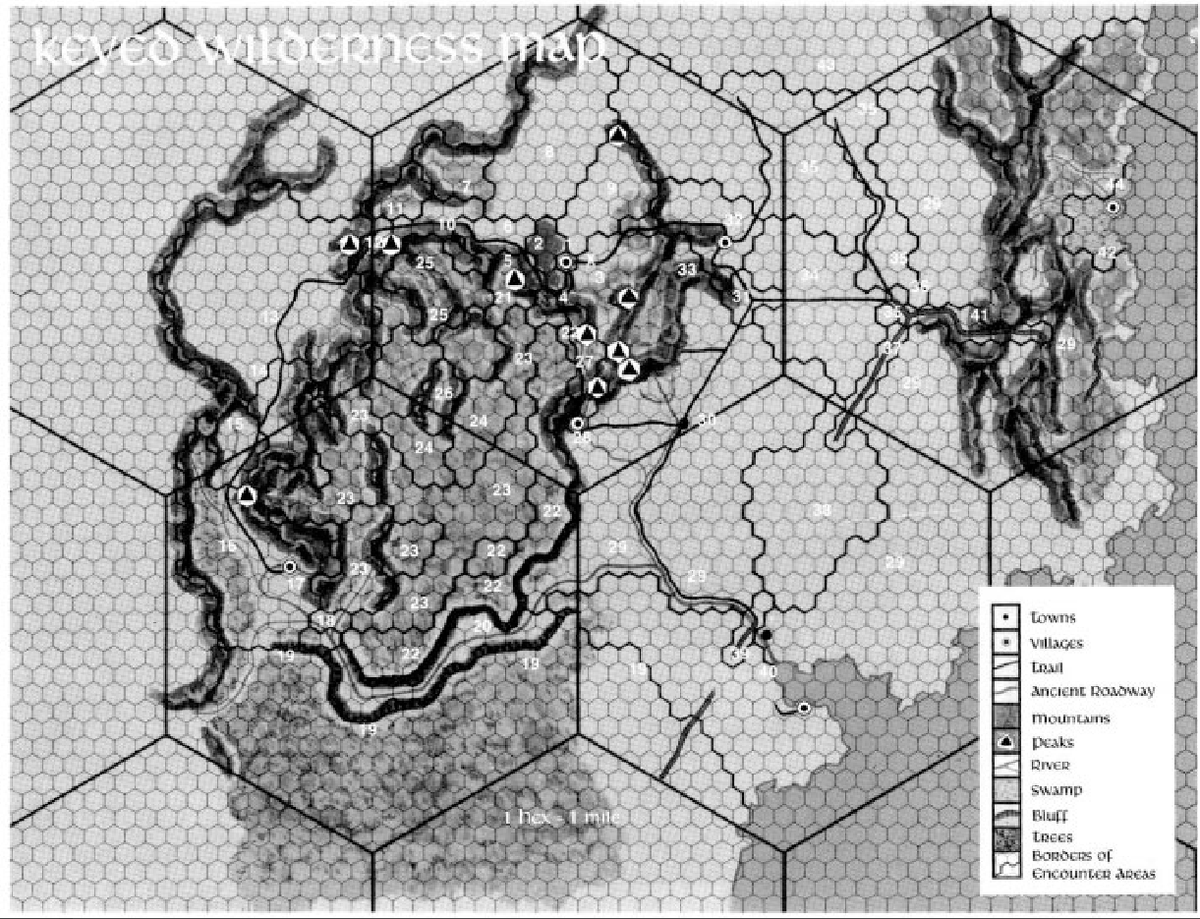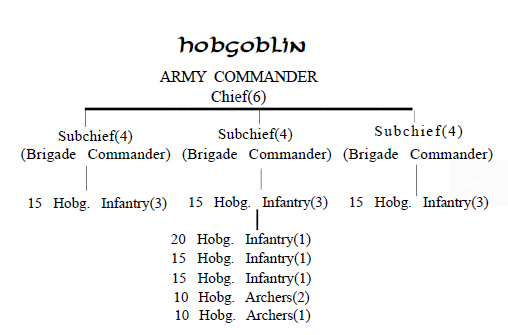#Dragonlance #2: Etheric Boogaloo is a prison break scenario.
The first half of the scenario funnels the PCs towards getting arrested and put into prison at the conquered dwarven fortress of Pax Tharkas.
The second half is the prison break itself...
The first half of the scenario funnels the PCs towards getting arrested and put into prison at the conquered dwarven fortress of Pax Tharkas.
The second half is the prison break itself...

...culminating with the PCs fleeing south with hundreds of war refugees into the wild realms of DL3 Dragons of Hope.
We're continuing our Let's Read of the #Dragonlance Saga, which starts over here if you'd like to begin from the beginning!
https://twitter.com/hexcrawl/status/1528081088001605634
The first half of DL2 is, IMO, mostly a missed opportunity.
The set up from DL1 is:
- PCs explore the wilderness around Solace.
- Dragonarmy scouts actively pursue them.
- They cross the mountains & go to Xak Tsaroth.
As DL2 starts, they come back across the mountain...
The set up from DL1 is:
- PCs explore the wilderness around Solace.
- Dragonarmy scouts actively pursue them.
- They cross the mountains & go to Xak Tsaroth.
As DL2 starts, they come back across the mountain...
...and find that the dragonarmies have conquered everything.
Looking down from the mountain pass, they can see fires burning. Huge pillars of smoke.
Things have gone horribly, horribly wrong.
Looking down from the mountain pass, they can see fires burning. Huge pillars of smoke.
Things have gone horribly, horribly wrong.
What would be utterly fantastic at this point would be to just take the map from DL1 and re-key it: All the places the PCs went before are now post-invasion.
There's destruction. Misery. Enemy troops patrolling.
There's destruction. Misery. Enemy troops patrolling.

Importantly: Everywhere they go, they find evidence that the draconians are enslaving people, loading them in wagons, and shipping them south.
Make sure to load up anybody the players really liked from the first adventure and ship 'em to Pax Tharkas.
Make sure to load up anybody the players really liked from the first adventure and ship 'em to Pax Tharkas.
Also, there's only one place of easy refuge: Qualinesti.
The elven nation is the only place still holding out against the dragonarmies.
The elven nation is the only place still holding out against the dragonarmies.
Maybe the PCs rescue some people. Maybe they get captured.
Either way, everything points them south: Either to refuge Qualinesti or directly to a rescue mission in Pax Tharkas.
Either way, everything points them south: Either to refuge Qualinesti or directly to a rescue mission in Pax Tharkas.
This, unfortunately, is not the direction DL2 takes.
I'd take a closer look at what DL2 does, but I promised earlier in this Let's Read not to talk about railroading any more.
I'd take a closer look at what DL2 does, but I promised earlier in this Let's Read not to talk about railroading any more.
Short version: Gilthanas, an NPC elf shows up, and is like, "Hey. It's really important that you don't try to escape this slave caravan."
Players: Why not?
Gilthanas: I can't tell you or it will ruin the big surprise!
Players: Why not?
Gilthanas: I can't tell you or it will ruin the big surprise!
And if the PCs do try anything, the adventure is like:
Eventually Gilthanas' elven buddies show up, save the PCs, and take everyone back to Qualinesti.
The elves will tell the PCs that they need to go Pax Tharkas and save the refugees.
Players: Can we bring them back here?
Elves: Fuck no.
Players: Can we bring them back here?
Elves: Fuck no.
"Of course, the Innfellows may reject the elves' appeal. In this case [the elves] will ask the PCs to leave. [...] No matter which direction the PCs go... these skirmishes will continue, one every game hour, until all the PCs are dead."
And that's how the Dragonlance Saga ends!
And that's how the Dragonlance Saga ends!
Sigh.
Okay. Not really.
Couple things before we move onto Pax Tharkas.
Okay. Not really.
Couple things before we move onto Pax Tharkas.
PC 1: We've searched the world for any trace of the True Gods and found nothing.
PC 2: There is only one written record of the gods and naught else of their teachings remain.
Elves: So, cool story, most of us were literally alive back then and remember the True Gods.
PC 2: There is only one written record of the gods and naught else of their teachings remain.
Elves: So, cool story, most of us were literally alive back then and remember the True Gods.
That's not even me drawing snarky conclusions. The text of DL2 points this out explicitly... and then just kind of ignores that the god-hunting PCs are going to have a few questions.
It's pretty clear that the design team didn't recognize that they'd blown up their own premise. The PC who is MOST obsessed with the True Gods when the campaign begins is the one who is FROM THIS FOREST.
Throughout these first few adventures, the PCs are antagonized by Fewmaster Toede, a hobgoblin leader.
What you may not immediately realize is that "Fewmaster" is a rank (because the book does not explain this.
Much later, Toede is promoted to Highmaster.
What you may not immediately realize is that "Fewmaster" is a rank (because the book does not explain this.
Much later, Toede is promoted to Highmaster.

I like the Fewmaster/Highmaster ranks. Once you figure it out, it's very flavorful.
If you're going to include fictional ranks in your RPG adventure, though, I have a request:
1. Actually work them out so that you use them consistently.
2. Throw in a sidebar where you spell them out for the GM.
It makes it tremendously easier to improvise in your scenario.
1. Actually work them out so that you use them consistently.
2. Throw in a sidebar where you spell them out for the GM.
It makes it tremendously easier to improvise in your scenario.
This is something I recently had deeply ingrained into me while working on the Descent Into Avernus Remix, where I worked out a ranking system for the legions of Hell.
You don't need every single detail. Just enough to cover the stuff in the scenario.
thealexandrian.net/wordpress/4649…
You don't need every single detail. Just enough to cover the stuff in the scenario.
thealexandrian.net/wordpress/4649…
DL11 Dragons of Glory does include army lists.
The only problem is that the Hobgoblin ranks have nary a Fewmaster or Highmaster to be seen.
The only problem is that the Hobgoblin ranks have nary a Fewmaster or Highmaster to be seen.

The Let's Read continues over here!
If you'd like to make sure you don't miss it when new parts are posted, make sure to hit that Follow button.
If you'd like to make sure you don't miss it when new parts are posted, make sure to hit that Follow button.
https://twitter.com/hexcrawl/status/1534946416811864066
• • •
Missing some Tweet in this thread? You can try to
force a refresh










